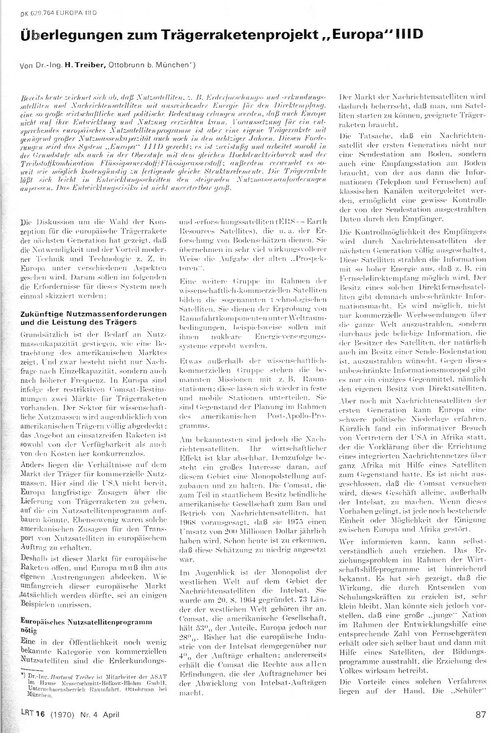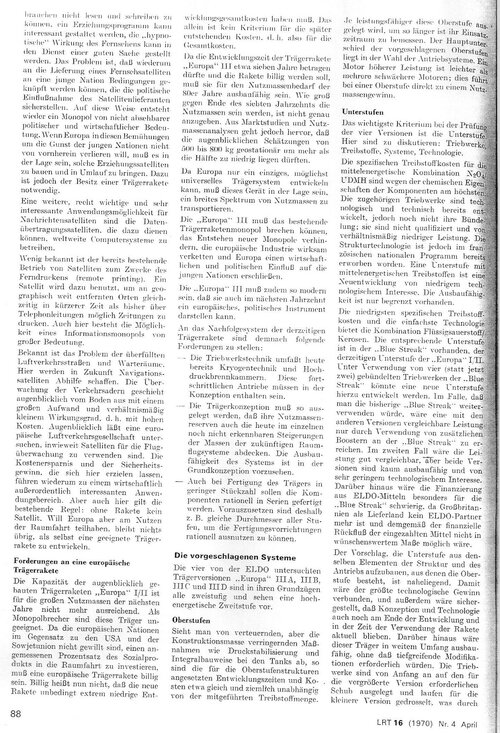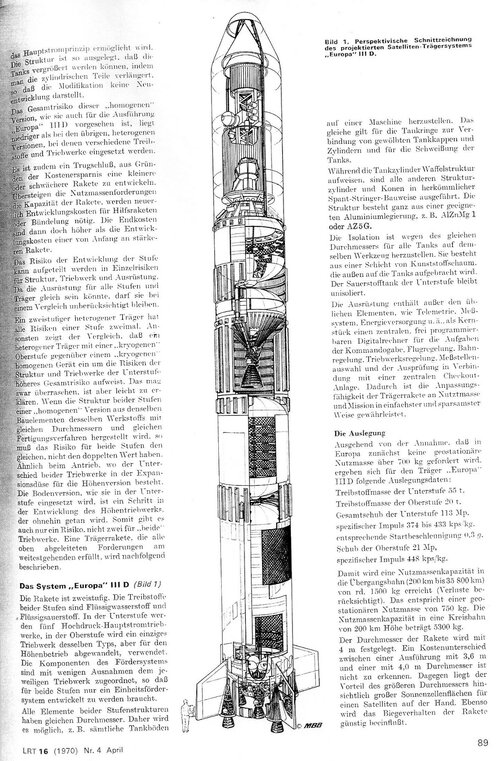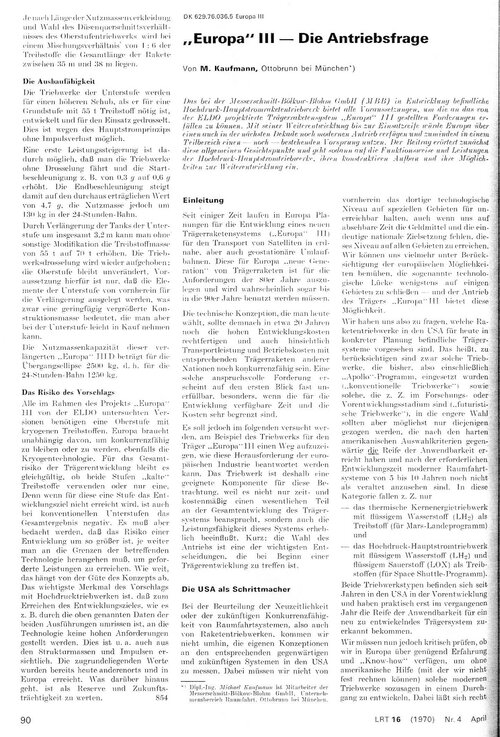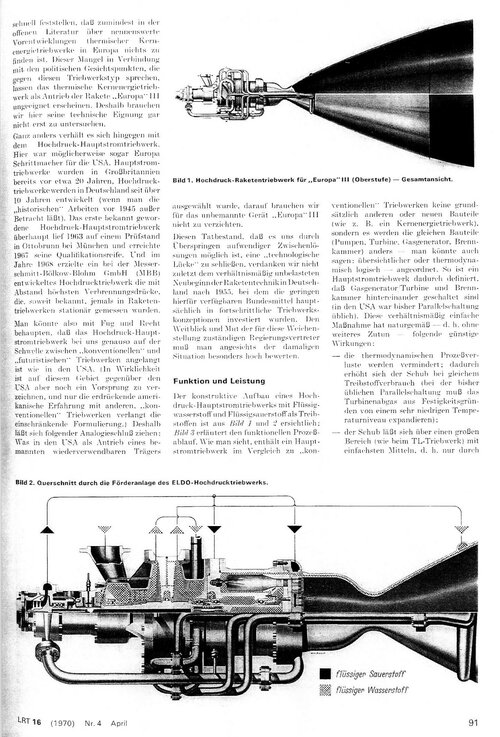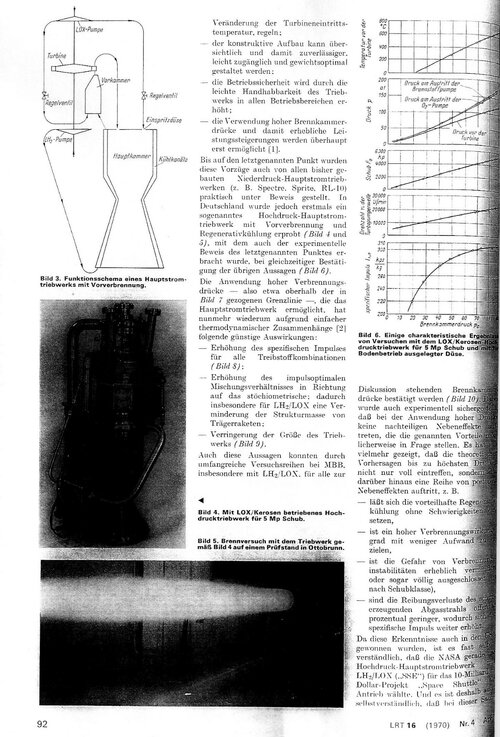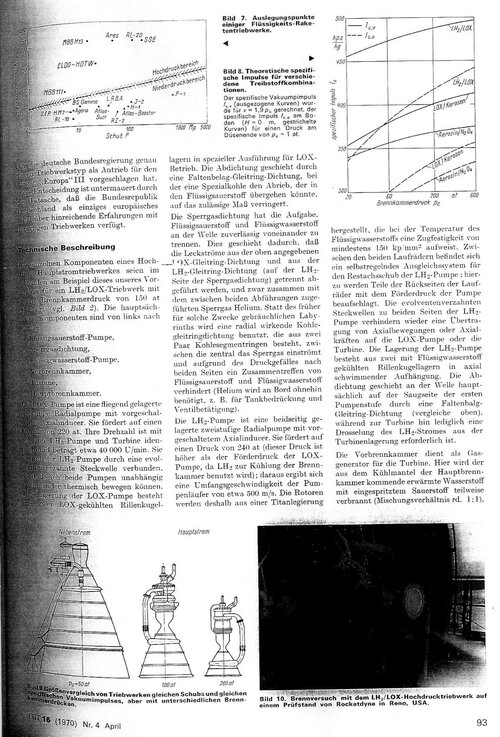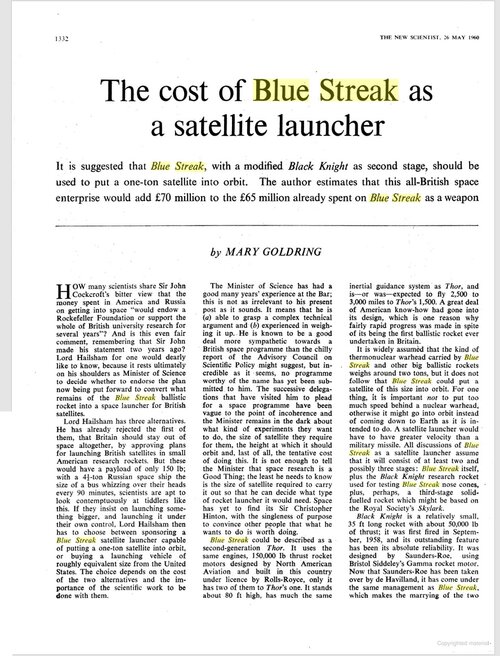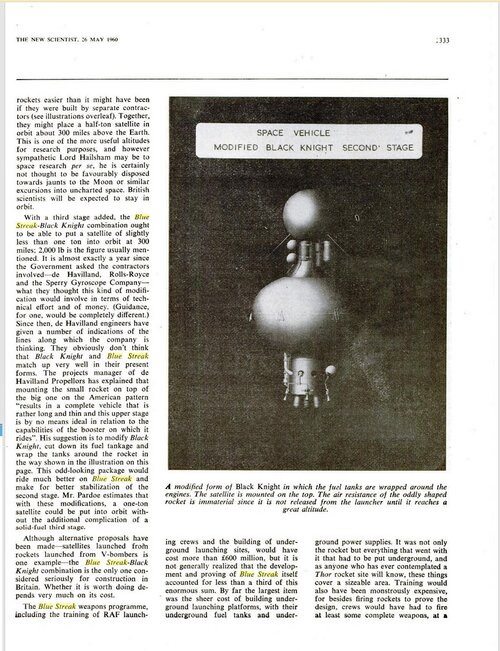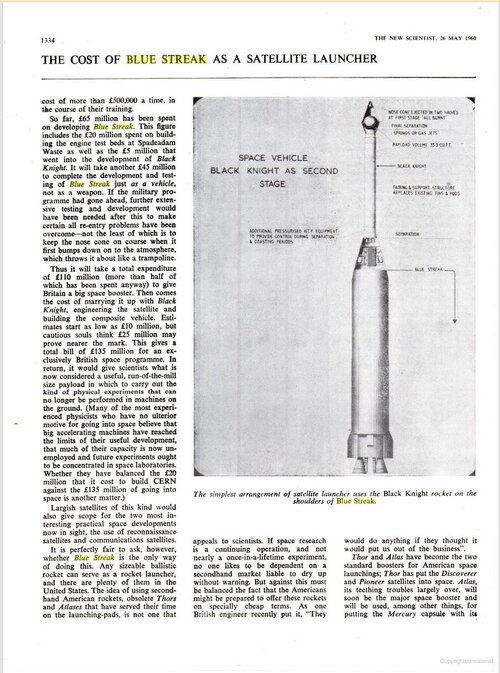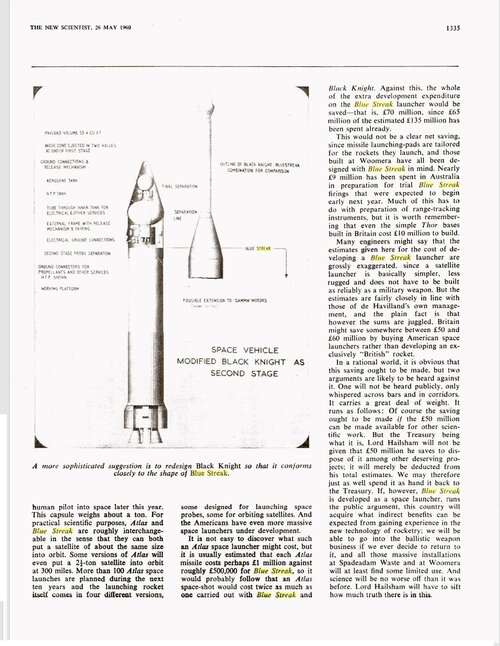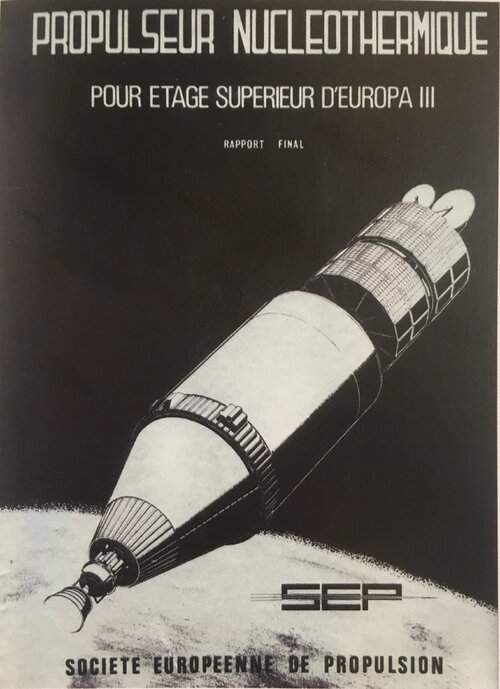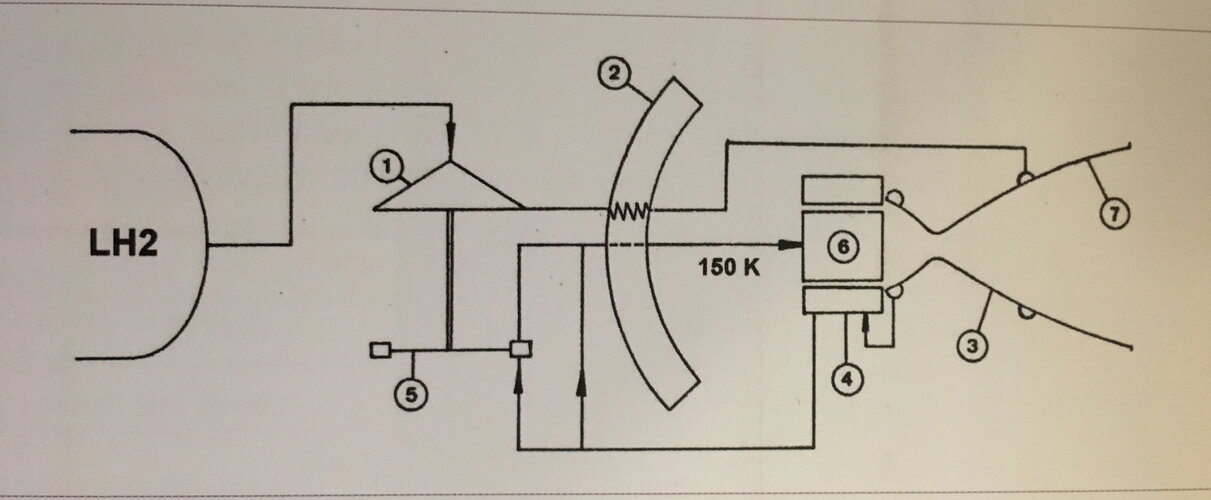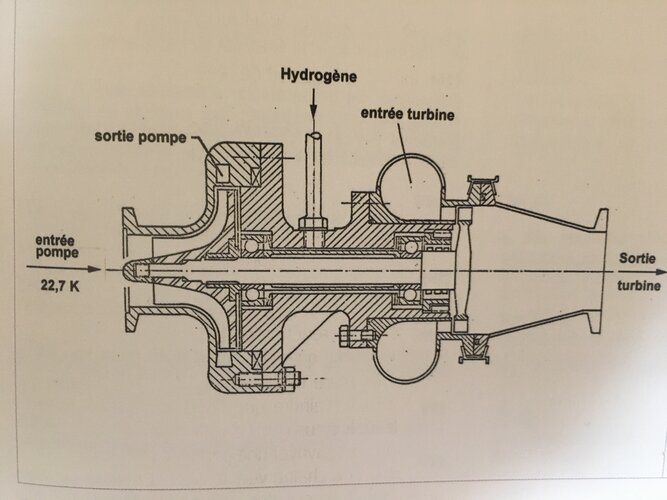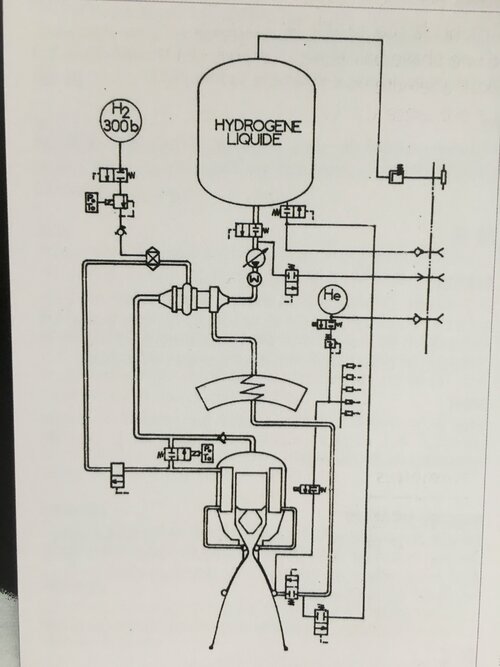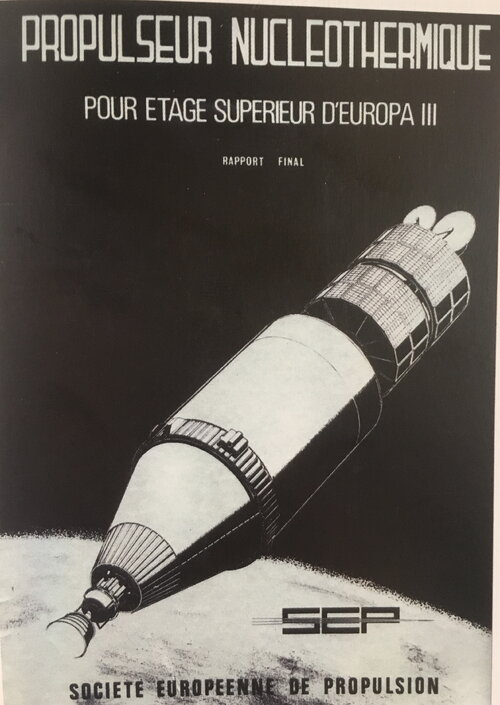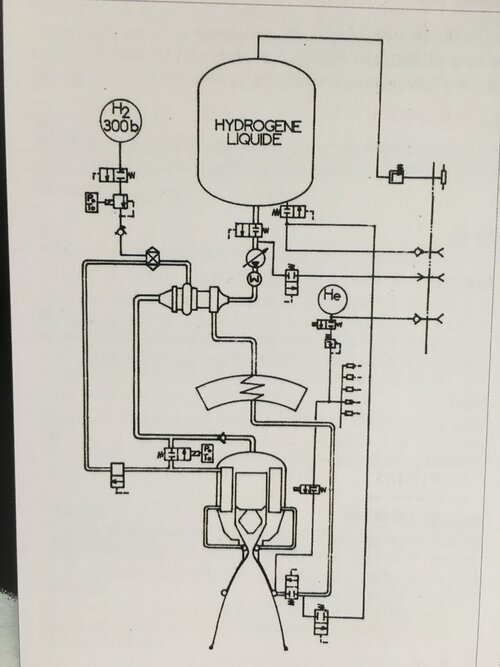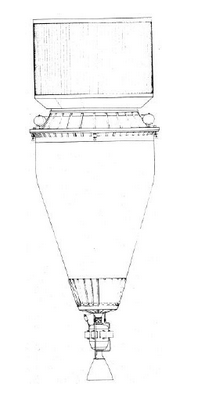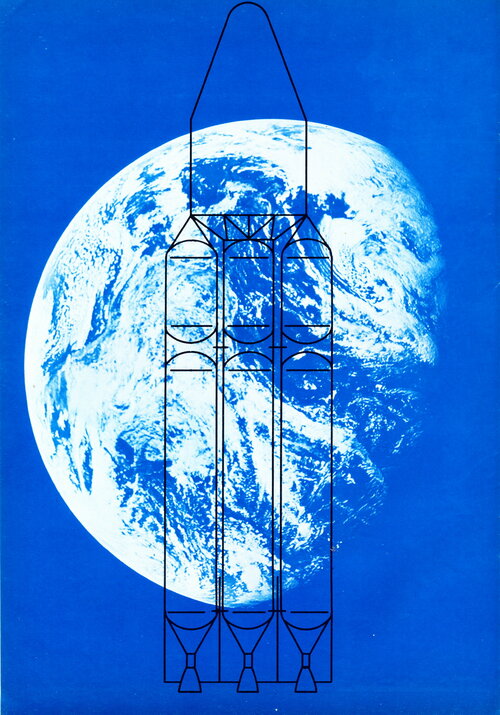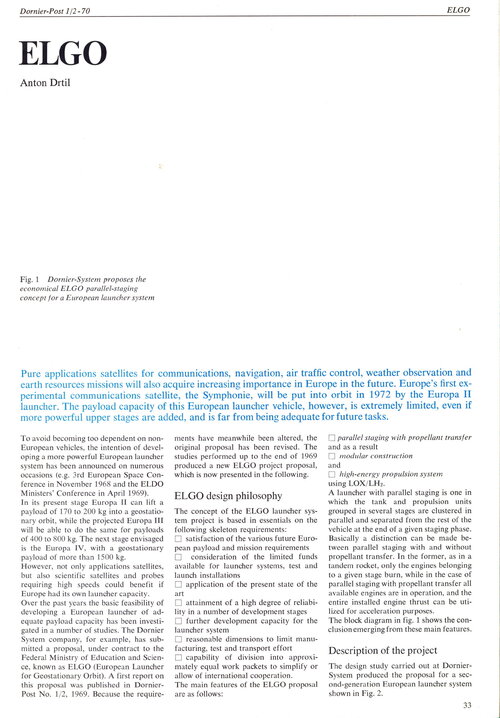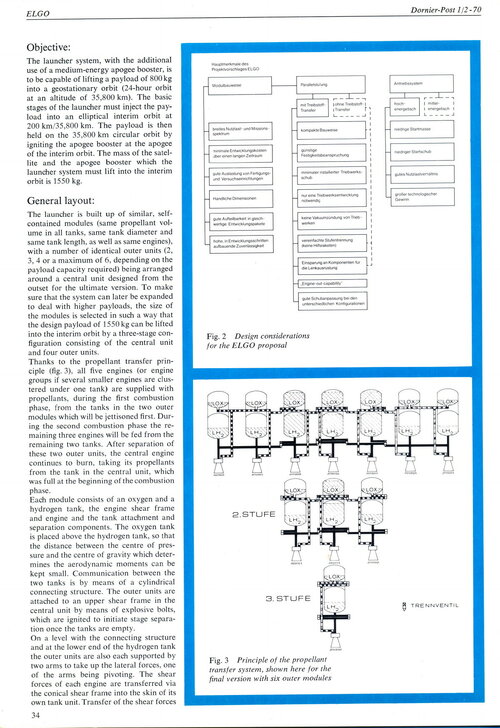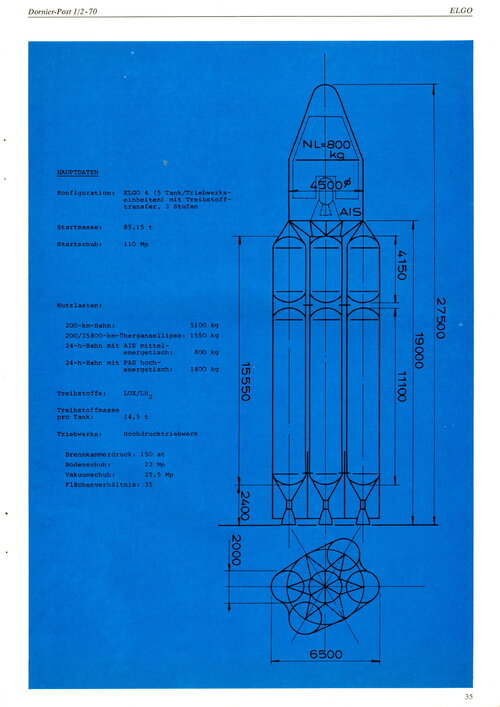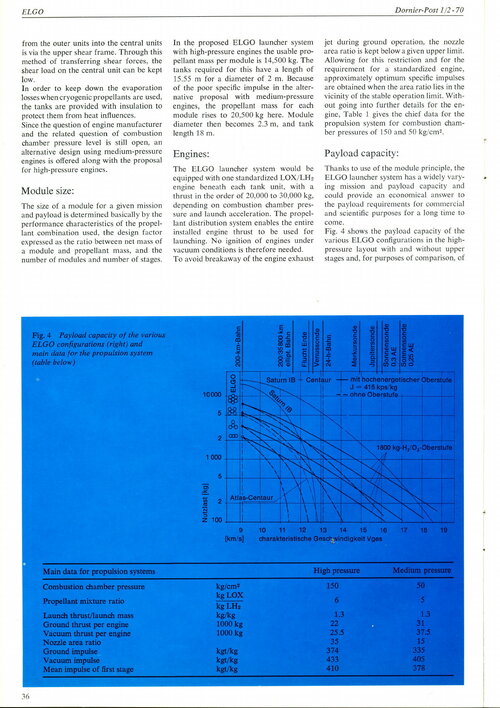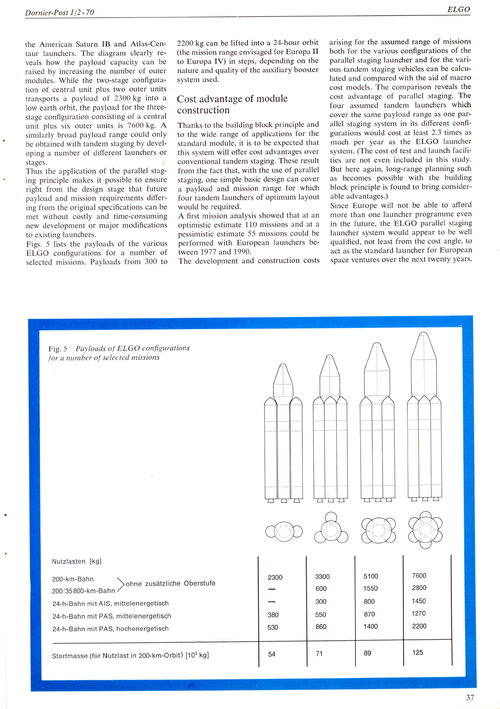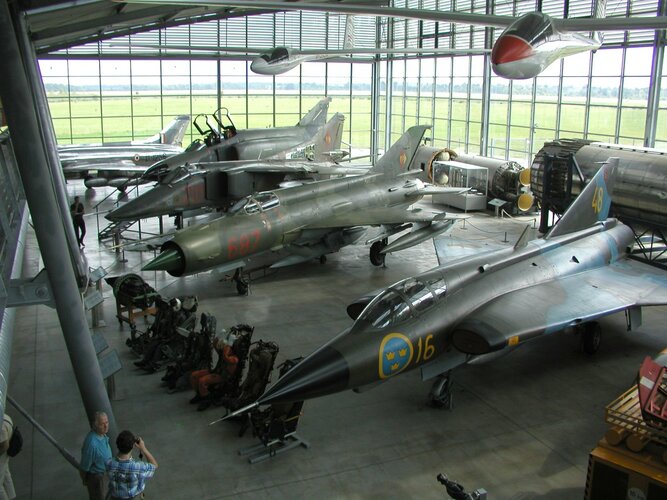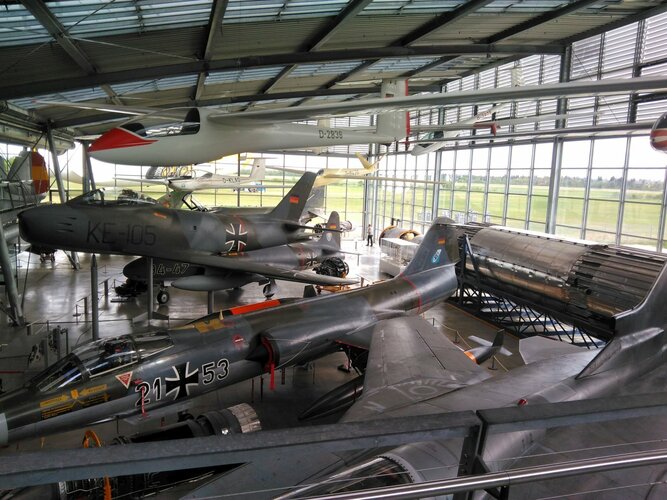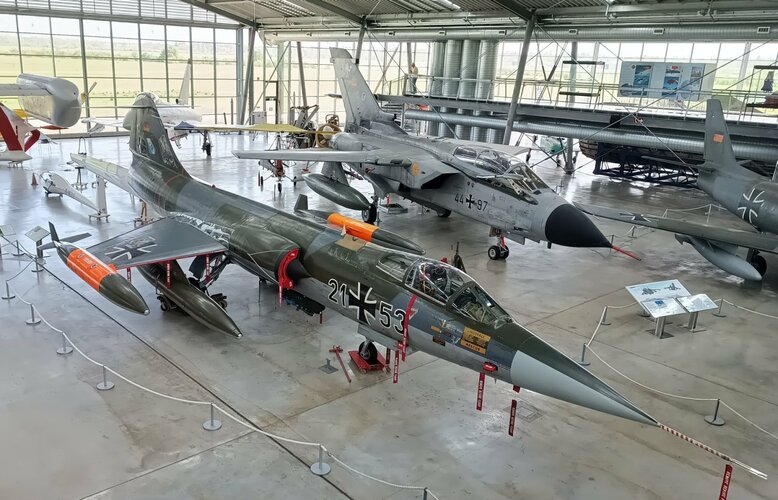Cryorocket's nuclear thermal rocket design.
From "La legende d'un demi siecle de moteurs fusée à Villaroche, volume 1"
View attachment 727036
"In 1971, through the EUROPA program, and under the direction of CRYOROCKET under a CECLES/ELDO contract, we (SEP) did the general study of a propulsive system associated witha nuclear reactor that heats hydrogen as a reaction mass.
This system was considered for EUROPA 3, and should enable the transportation of a larger payload than 1,680 kg from a 200km circular orbit to a 36,000 geostationary orbit.
The stage's mass is 5.5 tons for an estimated ISP of 815s (for comparison, the H8 stage of Ariane 1 weighted 9.3 tons with a 446s isp).
The thrust was quite low, with about 2 kN compared to 65 kN for the H8 stage, the flight trajectory was very different:
A first burn would bring the payload to a transfer orbit, while a second, after a ballistic phase, would go to Geostationary orbit.
The considered reactor power output was on the order of 10 MW. We're far from the performances of the famous NERVA that were reached during its development from 1955 to 1972. But NERVA, in its outline, became a reference for the study that we were contracted for.
(NERVA performances: 1,560 MW ISP=825s; T_Chamber = 2360K; Thrust = 330 kN)
The principle that we chose for the EUROPA engine is as following:
The Liquid Hydrogen leaving the tank at low pressure (2 bar) crosses the pump (1)then the shielding (2) that, if necessary, it cools, before then going in the nozzle's regenerative circuit (3).
The nuclear core's technological requirements necessitate that the fluid must be above a certain temperature as input. Therefore, the Hydrogen must be heated in the heat reflector (4). This reflector, made of Beryllium, must reflect part of the neutrons coming from the chain reaction in the core.
The hydrogen, then at a temperature of around 150K, make the turbine work (5) then reaches the core (6) where its temperature increases to 2400K for a chamber pressure of around 5 Bar. The expansion happens throught the nozzle (7)"
View attachment 727032
| Operation durations | 7.65 hours | Temp. H2 when entering the reactor | <= 200K |
| Duration of 1st propulsive phase | 2.00 h | Pressure H2 when entering the reactor | 15 bar |
| Duration of ballistic phase | 5.20 h | Temp H2 when leaving the reactor | |
| Duration of 2nd propulsive phase | 0.45 h | -during the propulsive phase | 2400K |
| | -during the ballistic phase | >=1900K |
| Power output propulsive phase | 10 MW | Pressure H2 when leaving the reactor | 5 bar |
| Power output ballistic phase | 0.1 MW | Hydrogen mass flow | >= 0.26 kg/s |
| Core Temp. Propulsive phase | <= 2600K | | |
| Core Temp. Ballistic phase | >= 2000K | Estimated isp | 815s |
| Heat reflectors temperature | 670K | Estimated thrust | 2080 N |
The turbopump: Single stage, 68,000 rot/min; 21 bar overpressure; 15.4 kW power output; mass flow 0.26 kg/s
View attachment 727033
General diagram of the stage.
View attachment 727035
What I wouldn't do to have a copy of that "final report"...
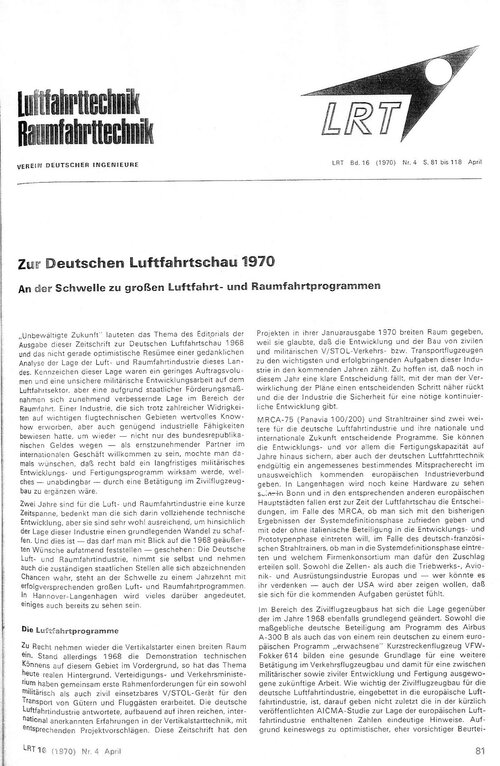 Europa III p1.jpg613.7 KB · Views: 33
Europa III p1.jpg613.7 KB · Views: 33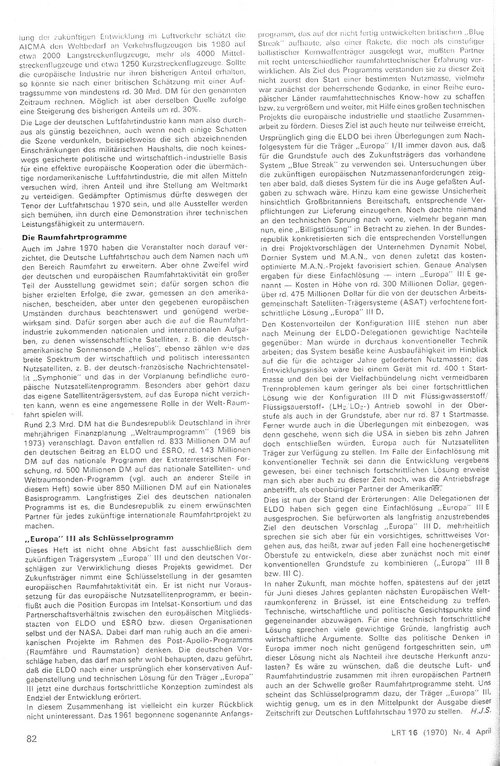 Europa III p2.jpg869.7 KB · Views: 24
Europa III p2.jpg869.7 KB · Views: 24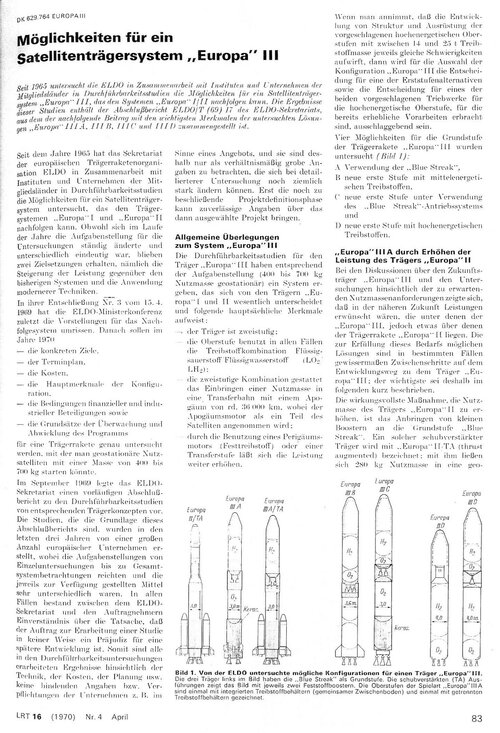 Europa III p3.jpg650.5 KB · Views: 20
Europa III p3.jpg650.5 KB · Views: 20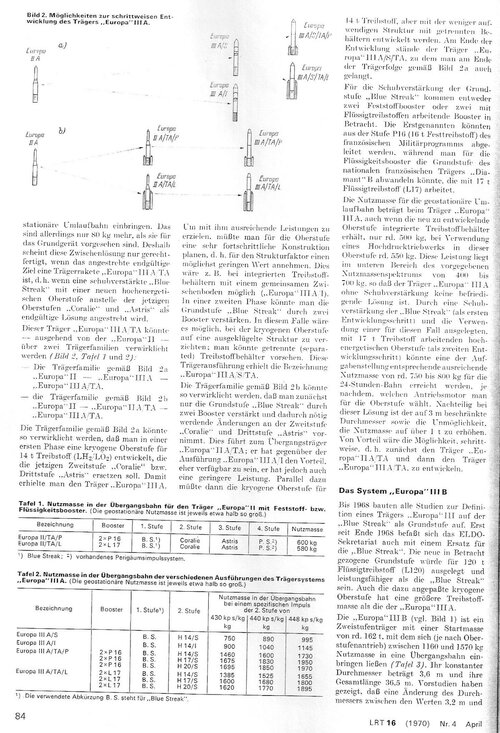 Europa III p4.jpg673.2 KB · Views: 18
Europa III p4.jpg673.2 KB · Views: 18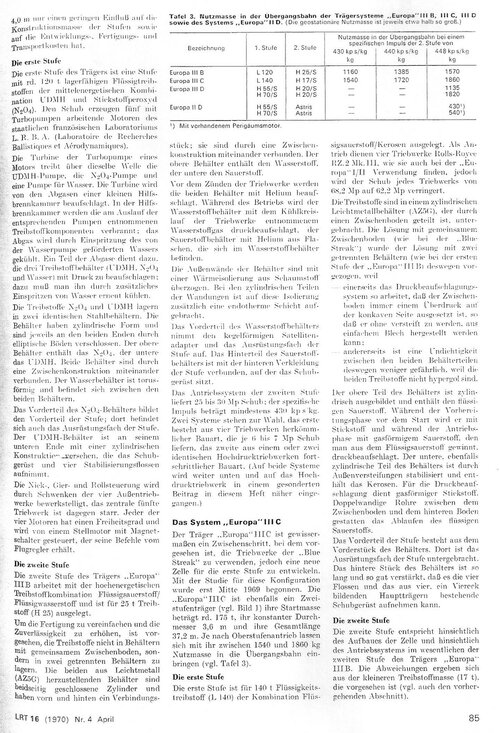 Europa III p5.jpg756.1 KB · Views: 18
Europa III p5.jpg756.1 KB · Views: 18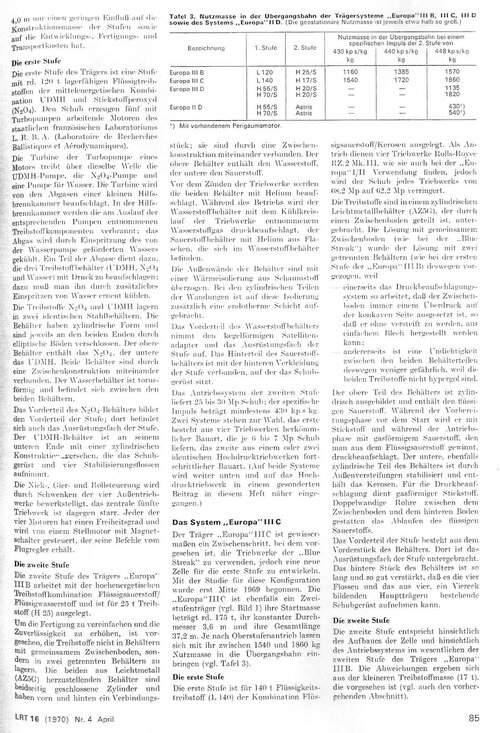 Europa III p6.jpg756.1 KB · Views: 18
Europa III p6.jpg756.1 KB · Views: 18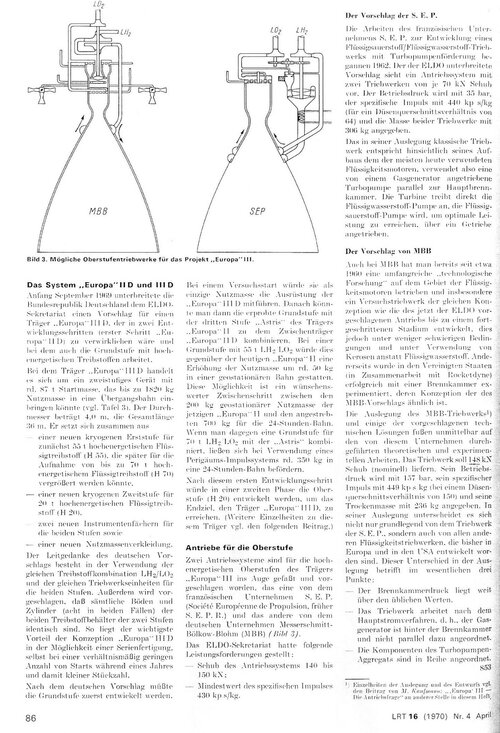 Europa III p7.jpg625.9 KB · Views: 29
Europa III p7.jpg625.9 KB · Views: 29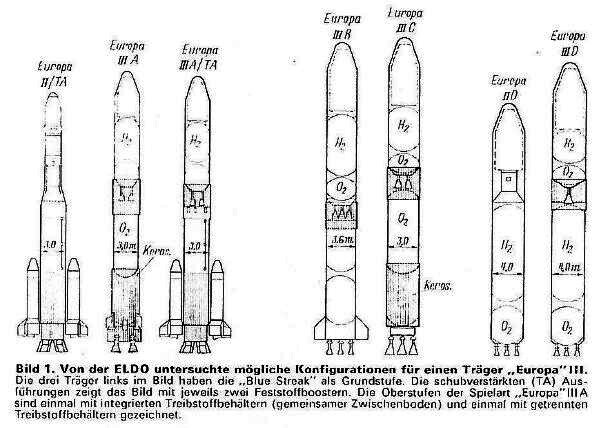 Europa IIID Lineage.jpg87.3 KB · Views: 30
Europa IIID Lineage.jpg87.3 KB · Views: 30
